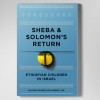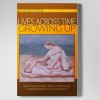Discussion
Four hundred years after Caravaggio’s short career and early death, psychoanalysis can place him in a pantheon of artists who — from a psychoanalytic perspective — advanced the representation of complex emotions. While constrained by his patrons’ wishes and subject matter, Caravaggio built on his great predecessors’ achievements, particularly his namesake, Michelangelo, and also went beyond them, such as Titian. Caravaggio transgressed contemporary rules/norms to expand the exhibition of a fuller range of emotion and the interplay of emotions of those in intense moments of human experience. He openly portrayed what psychoanalysts consider the fuller range of inner reality, including our ambivalences, thereby revealing our inner lives on the surface of canvas.
We can frame this discussion in terms of Handler Spitz’s (1989) overview of the relationship of psychoanalysis to aesthetics, elaborated by Blatt’s (1984) and Barasch’s (1991) focus on continuities and changes in visual representation of humankind over the ages.
Spitz gives three broad categorical approaches for the relationship between psychoanalysis and aesthetics: 1) pathography (using psychoanalysis and the aesthetic works to understand the author); 2) psychoanalytic readings of the text (such as Freud’s “reading” of the three caskets), and 3) grasping the audience’s reactions to a work (Freud’s study of jokes (1919)). If we consider Erikson’s studies of Luther, Gandhi and Freud as deep elaborations of pathography – involving not only the individual’s psyche, but also the society’s dilemmas – then this work falls in part into that category: how an artist’s work addresses not only his/her views and challenges, but also those of the era. Specifically, while this paper is not a pathobiography — given the paucity of information of Caravaggio’s life — we can speculate that Caravaggio dealt with the personal experiences of the Black Plague death of his father and sibling when he was three to four, as well as the deaths of many others of the time (and his dislocations from town to town to avoid the Plague) by portraying death and decay from his earliest work onwards: decay and death appear even in a still life – nature morte – of a fruit basket.17 His gruesome portrayals of decapitations might also be related to the developmental age of the painter at his father’s death, that is at the early Oedipal, suggesting (from the very little we know of his early life) his sense of the price paid for an Oedipal wish fulfilled.
We know so little about his early life, that we are left to speculate. But, we do know that the Black Plague painted a swath of death in Northern Italy in Caravaggio’s youth, killing some one-third of the population (Schutze, 2009). We can suggest that Caravaggio’s portrayals of decay and death as a part of life would resonate with concerns of his community and could explain in part, his popularity and the power of his work in his era (Schutze, 2009). He also was employed by the Church and its orders, yet was aware of the level of hypocrisy and obscene wealth and sexual practices of the Church, the same attitudes and actions that moved the devout Dante to write the Inferno three hundred years earlier. Caravaggio was an artistic picador to such Churchly bullish antics. That is, following Erikson (1994), we can understand Caravaggio’s subject matter as his way of addressing both deeply personal childhood (and adult) experiences that also resonate with his era and community.
But, let us turn to the central feature of this paper: a sixteenth century artist’s representation of complex emotions among intense relationships. Blatt enlarges this effort – applying psychoanalytic thinking to aesthetics and aesthetic development to understand our contemporary view of inner life — when he demonstrates that there are significant advances, turning points, in visual representations in art. Further, he suggests that these advances are consistent with Piaget’s ideas about cognitive development, even as Blatt cautions that we not “primitize” the work of earlier art. This moves us closer to understanding what steps, what efforts were needed to develop concepts of person, of relatedness in order that Freud could develop the discipline of psychoanalysis. Makari (2008) elegantly shows the scientific concepts of the nineteenth century (about sexuality, psychopathology, normal psychology) that Freud learned and was able to re-weave into a new discipline. Here, following Blatt or Szajnberg (2010), for instance, we suggest that one can use psychoanalytic understandings of inner life in order to chart how we developed these concepts, studying the aesthetic works – literary, visual, sculptural and possibly musical – over greater spans of time.
In this sense we can begin to observe how artists have advanced an documented our views of the inner life of mankind over the centuries, preparing the infrastructure of a road — an intellectual via Appia from Rome to Vienna (not only to Brindisi) — to psychoanalysis. Caravaggio brought the profane closer to the sacred, not only as Eliade has described (1959), but also as Freud did by elevating the mundane, the debased (parapraxes, dreams, symptoms) to self-enlightenment.
We too can explore further humankind’s development of awareness of self by using psychoanalysis. Blatt argues that Giotto’s new techniques — new ways of seeing and representing the world — represented a movement forward psychologically, both cognitively (in the Piagetian sense of reversibility, reciprocity, conservation being connected with the sense of infinity) and emotionally (in the sense of naturalism and humanism).18 That is, we can read the history of art (visual, plastic, literary) as a way of reading our progress (and regress) in Western humankind’s concepts of the inner world. In this paper, we focus on the representation of emotions – expressed in face, body, gesture and among the participants in intense moments.
We suggest that Caravaggio’s bold representation of both negative and positive feelings, including ambivalence and moments of ambiguity about feelings demands the viewer to approach, to feel moments of identity or uncertainty, to think harder as we look at these works: the Angel’s passive, calm face, yet pressing arm; David’s somber look; the absence of wrath, nor disgust, nor victory in Judith’s moment of killing the evil Holofernes; Caravaggio’s self-portraits in Medusa and the final Goliath; the impending rot in a basket of ripe fruit.
Auerbach’s argument in his now-classic Mimesis: The Representation of Reality in Western Literature includes his view that literary ways of representation develop over time, with occasional leaps of achievement: the New Testament’s elevation of the mundane to the sublime; Dante’s self-portrayal voyaging through Hell in order to reach Paradise; Shakespeare’s (overly) self-reflective prince (Auerbach, 1954). When we read Auerbach closely, he defines mimesis not as “imitation” of reality (the usual translation of Aristotle’s term): rather this is in large part, re-presentation of reality (external, internal) in such a manner that the reader/listener is moved to feel as if this could be happening or has happened. We “know” that these stories may not be fact, real, (the Akeda; Ulysses slaying of the Cyclops; Aenius’ amorous “sojourn” with Dido; Grimm’s or Sheherezade’s fairy tales): but they feel deeply human, they move us (Bernstein, 1974). That is, with psychoanalytic thought, we can begin to grasp why certain pieces (literary or visual) move us so much. In Caravaggio’s case, he tackles the imbrications of eros and thanatos, of ambivalence, of decay and death with life.
On the other hand, we can also use our psychoanalytic understanding of what appears to be universal in inner life — such as, the existence of the Unconscious, the extent to which we are influenced by our Unconscious, the presence of ambivalence in close relationships, the enduring nature of working models of attachment – to look back on the evolution of Western art to discern the turning points in our development of concept of self, person and relatedness. For example, the genre of “autobiography” was begun by Rousseau’s provocatively titled Confessions in the late 18th Century (Szajnberg, 1987). The elements of what we consider autobiographical first appear in this work: that early childhood influences whom we become in adulthood; that we can reflect upon our lives and that we can construct narratives of our lives, particularly with a listener (or reader in Rousseau’s case) available.19 In this sense, a foundation stone for psychoanalysis was laid by Rousseau: the value of narrating one’s life to both understand and explain and the value of reviewing one’s early life. Psychoanalysis can be considered an oral/aural extension of autobiographical genre (Szajnberg, 1987).
We have the opportunity then to look at various forms of art to see how we have developed our psychoanalytic concepts over time. In a sense, Freud is a great systematizer and more significantly, developed a technique to access inner life. We can learn from great artists (visual, plastic, literary) how we came to become who we now as twenty first century psychoanalysts are – how we developed –learning what may be universal, but also what may be cultural variations of our concepts of humankind. Dyson (2007), in a book review and essay, outlined how cultural differences between the French and Anglo-Germanic schools of physical and mathematical sciences refracted into different paths of methodology and discovery. With time, discussion and critical thinking, such differences are resolved by the larger scientific community. Paul (2010), a psychoanalyst and anthropologist, points out that as an anthropologist, he expects differences in psychoanalytic “thought” (what is optimal inner life; what is intimacy; what are the goals of treatment; what are the methods) among different cultures. He cites the more evident differences between the individual-centric Western perspectives versus the more family and group-centric Eastern cultures. By such careful study, across time, across cultures, we can begin to get clarity of how we have constructed our views of inner life, what we share as “human,” and what differentiates us from each other.
In this study of a late sixteenth century Italian master, we see Caravaggio‘s perspective on the universality of emotions and psychoanalytic understandings of ambivalence and intimacy.20 We learn that as Caravaggio exposes the darker and more intensely ambivalent aspects of our inner lives, this aesthetically enhances our view of humankind.
Footnotes
18 Blatt’s major work reviews the history of visual art and draws parallels to Piagetian stages of development, for instance the acquisition and representation of linear perspective and three-dimensionality in Renaissance painting.
19 See Szajnberg (1992), for more details on the argument of why Rousseau’s is the first autobiography. For instance, while St. Augustine titled his book Confessions, the basic sense of the book is that he became the man he did because Christ kept drawing him towards Christ and despite his youth of fine wining and womenizing.
20 In part, we can view Caravaggio’s expressed emotions through the lens of Ekman’s work, a handmaiden to psychoanalysis.



